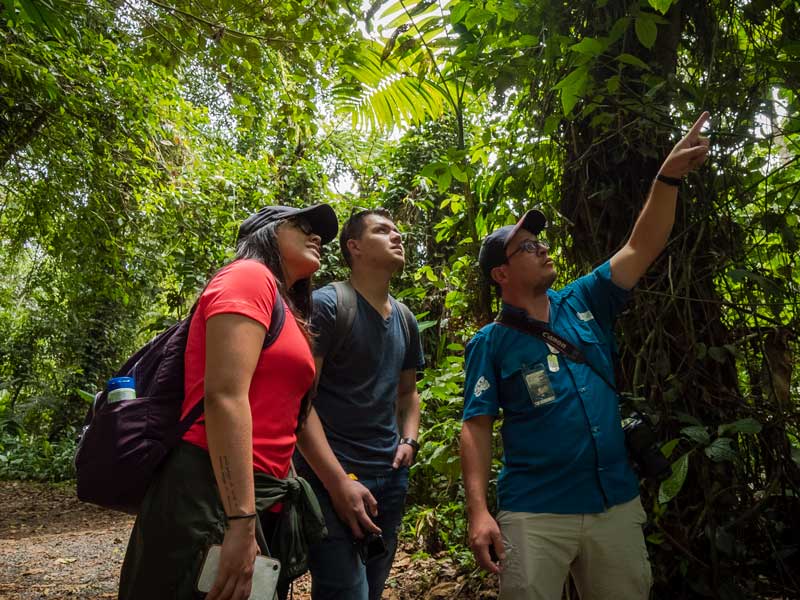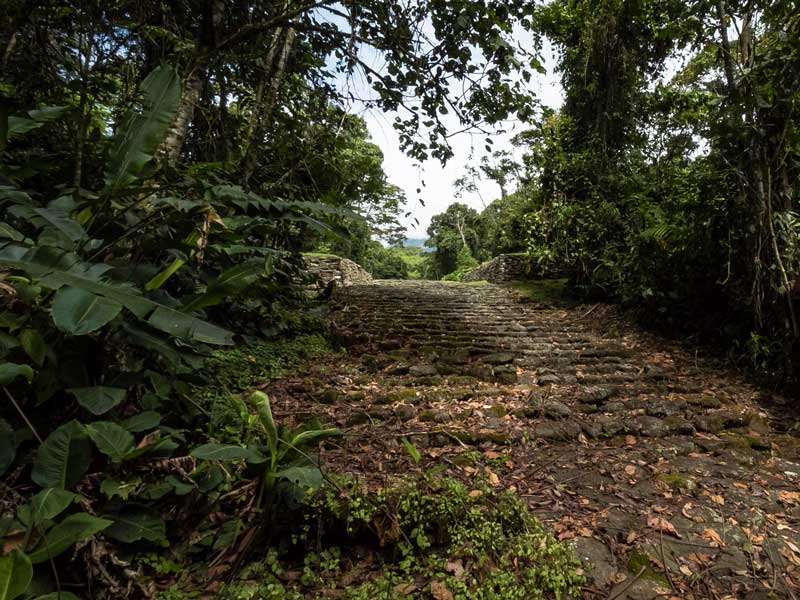Connect with nature and history
Today, our journey took us to cross an item off our list of destinations to visit. Our destination was the Guayabo National Monument, located 18 km northeast of Turrialba, Cartago – more precisely, in the district of Santa Teresita.
Before telling you more about our experience, here are some important facts about the location.
Hours of operation:
- every day from 8:00 a.m. to 3:30 p.m., including holidays.
Rates:
- Costa Rican adults ₡1,000.
- Costa Rican children ₡500.
- Costa Rican students ₡500.
- Non-residents $5.
- Non-resident children $5.
- Camping permit $2.
- Children under 2 years of age and citizens and residents over the age of 65 enter free of charge.
- There is (currently) no parking lot; vehicles must be left on the side of the road. The road is safe and has little traffic.
- You may not enter with any luggage or bags.
- Alcoholic drinks are prohibited.
- Pets are not permitted.
- Food may not be brought into the protected area.
- The use of cigarettes or drugs is not permitted.
- The use or flying of drones is not permitted.
- Drinking water is available.
- There is a special path for wheelchairs.
- The site has a handicrafts store, restrooms compliant with Law 7600, a camping area, lunch area and visitors’ center.
- The area has a total of three trails, one of which is unpaved. The use of mosquito repellent is recommended at all times.

See the attractions of Turrialba
The monument is located two hours from San José on the highway to the picturesque region of Turrialba. We recommend that you take full advantage of what this region has to offer, with its culinary offerings, adventure tourism and the slopes of the volcano.
The Guayabo National Monument covers an area of about 20 hectares, which includes the entire archeological site. It can take 20 to 30 minutes to walk through the structures, depending on your pace.
This is a place with the perfect natural surroundings for your next weekend. Some of the animals you might come across are the crested guan, three-toed sloth, eyelash viper, crested owl, as well as species of frogs, hummingbirds, bats, butterflies, coatis, spiny lizards, and others. In fact, we were lucky enough to spend over an hour observing a crested owl – it’s truly marvelous!
There is also a picnic area outside of the archeological site where you can prepare a delicious meal for your family and friends

Civilizations
The main attraction, of course, is the history imbued in the site. The monument contains archaeological structures that were inhabited from 1000 BC to 1400 AD. The zenith of its development was reached around 800 AD.
Its structures include 43 mounds, three aqueducts, two squares, two roads and one enclosure, all of which are connected by minor roads, bridges and steps. The mounds are the largest structures.
According to historians, the economy of the indigenous people was based on agriculture, hunting and fishing. The reason for which the site came to be inhabited remains unknown, as well as the reason for its abandonment a century before the Spanish conquest.
Another interesting fact to mention is that the site is located in the cultural region referred to as the Intermediate Area, which stretches from Alajuela province in Costa Rica to northern Ecuador and the Orinoco River in Venezuela.
Our guide mentioned that visitors are encouraged to spend no more than 30 minutes in the area with the structures in order to protect the site. The protected area also admits only a limited number of people. Weekends see the highest number of visitors.
Before we forget, there is also a lookout that offers you a panoramic view of the settlements.
Ready?





